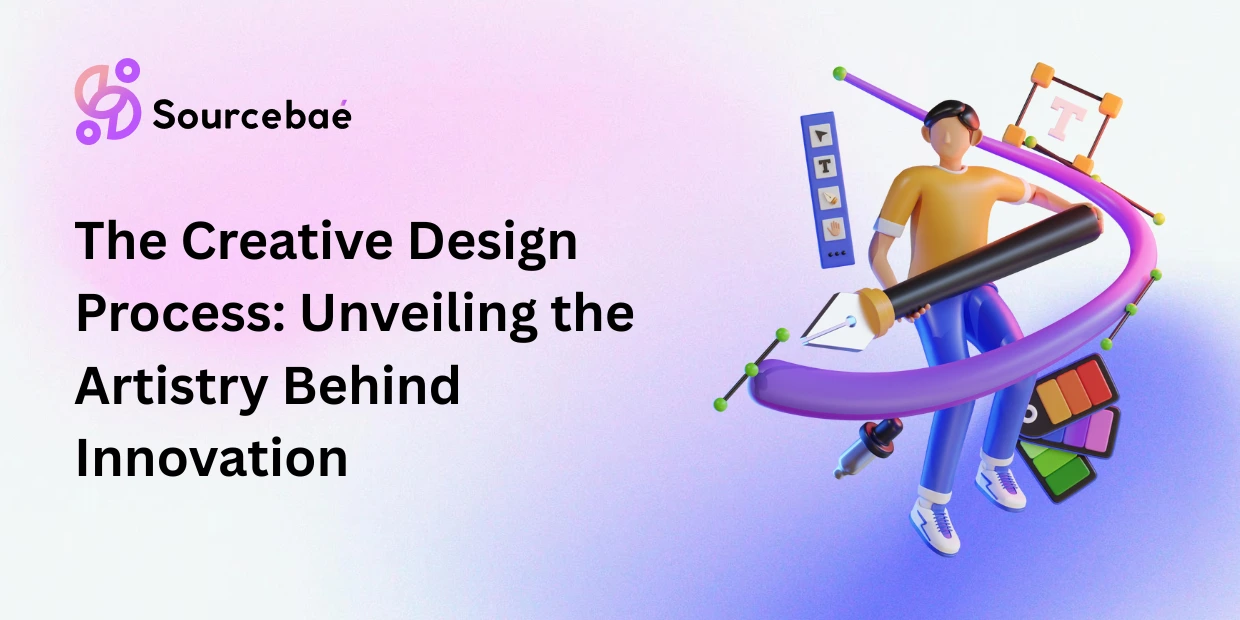In a world driven by innovation and aesthetics, the creative design process stands as a cornerstone of artistic and functional endeavors. From fashion to architecture, product design to digital interfaces, understanding the journey from concept to reality is paramount. This article delves into The Creative Design Process, uncovering its stages, significance, and secrets to nurturing innovation.
The Creative Design Process: A Deep Dive

The journey from a mere idea to a captivating creation involves several distinct stages. Each step plays a pivotal role in shaping the outcome, ensuring that the final product resonates with its intended audience.
Ideation: Nurturing the Spark of Imagination
In the realm of creativity, everything begins with an idea—a spark of imagination waiting to be ignited. This phase involves brainstorming, research, and exploring various perspectives.
Conceptualization: Giving Form to Inspiration
With ideas in hand, the next step is to transform them into tangible concepts. Designers outline the vision, defining elements, functions, and aesthetics. This phase bridges the gap between abstract notions and structured plans.
Visualization: Breathing Life into Ideas
Visualization brings designs to life through sketches, mock-ups, and digital renderings. This stage enables designers to analyze the visual flow, identify potential flaws, and refine the concept further.
Iteration: Refining and Enhancing
The creative process thrives on refinement. Designers iterate on their ideas, making necessary adjustments to enhance functionality and aesthetics. This iterative approach ensures that the final product is a result of meticulous craftsmanship.
Materialization: Making it Real
This is where ideas truly materialize. Designers select materials, techniques, and technologies to bring their concepts to reality. Whether it’s fabric, wood, metal, or digital code, this phase involves expert craftsmanship.
Evaluation: Scrutinizing for Excellence
Before unveiling their creation, designers rigorously evaluate every aspect. This involves testing functionality, seeking feedback, and fine-tuning details to ensure the design aligns with its purpose.
Presentation: Showcasing the Masterpiece
The grand reveal is a culmination of meticulous efforts. Designers present their creation to the world, highlighting its features, benefits, and unique qualities. This stage involves storytelling and marketing prowess.
The Creative Design Process: Crafting Innovation
The creative design process transcends industries and domains, forming a vital conduit for innovation. It’s not just about aesthetics; it’s a synergy of artistry, functionality, and human experience. At its core, this process champions the fusion of imagination and practicality.
The Creative Design Process is driven by passion, expertise, and an unwavering commitment to turning abstract concepts into tangible realities. It’s a dance between inspiration and technical prowess, a journey that yields products that resonate with hearts and minds alike.
FAQs
Q: How long does the creative design process typically take?
A: The duration varies based on the complexity of the project. Simple designs may take weeks, while intricate creations can span months.
Q: What role does collaboration play in the design process?
A: Collaboration fosters diverse perspectives, enriching the creative process. Designers, engineers, and stakeholders collaborate to ensure a well-rounded outcome.
Q: Can the design process be applied to non-visual projects?
A: Absolutely! The principles of the design process, such as ideation, iteration, and evaluation, can be adapted to various domains, including software development and problem-solving.
Q: How important is user feedback during the design journey?
A: User feedback is invaluable. It provides insights into user preferences, pain points, and areas of improvement, ensuring the final design aligns with user expectations.
Q: Is failure a part of the creative design process?
A: Failure is a natural aspect of innovation. It offers valuable lessons, guiding designers to refine their concepts and push boundaries.
Q: What distinguishes a good design from a great one?
A: While good design meets functional requirements, great design goes beyond. It evokes emotions, addresses user needs innovatively, and stands the test of time.
Conclusion
In a world that celebrates innovation and aesthetics, the creative design process emerges as a beacon of ingenuity. From ideation to presentation, each stage contributes to the transformation of ideas into reality. With passion, expertise, and a commitment to excellence, designers bring forth creations that shape industries and inspire generations.
Unlocking the mysteries of “The Creative Design Process” invites us into a realm where imagination takes form, where ideas evolve into masterpieces, and where innovation thrives. As we embrace this journey, we celebrate not only the final outcome but the magic of the process itself.
Also read: Figma vs. Adobe XD vs. Sketch






